CUSTOM JAVASCRIPT / HTML
Marketing Strategy – Top 5 Ways to Implement Video Content
Written by Drop Servicing Blueprint

Introduction
Email Marketing
Email has been an essential part of every online marketers' arsenal since the 90s.
Although we've seen open rates drop year after year, it's still apparent that the medium for communicating with our audience remains king.
Every person in business uses email to communicate even with the cool kids on the block like Slack.
Email is what snail mail used to be.
So, it makes sense that it's one of the most powerful ways to implement video content.
There are many tactics and strategies you can use in implementing an email marketing strategy.
We will focus on the most effective one we've found here.
The video series strategy.
Let's say you have a new product and you want to get the word out there, as well as explain its features and benefits in depth to your audience.
You segment your audience into an email list that will find the product most useful.
But you're unsure of the best way to get the message across effectively.
So, here's what you do…
Video Series Strategy
You set up the landing page with all the conversion optimized elements and a 3-minute-long video, you tried to get this video shorter according to the video companies' instructions, but all the essential buying information is included in this video.
So, because of this, you decide to create enough interest with the starting audience via your email that they will be willing to watch the full-length video…
To do this, you create a series of videos that target a simple message and a single feature/benefit of the product.
This way you only have 15-30 seconds of content.
You embed an image with a click play button that sends your reader to the above landing page 1 month before the product's launch.
Sending one email per week, with a new feature/benefit, your call to action in each of the four videos is 'x launches xxx sign up here/reply to this email to be notified.
This way, once your 3-minute video is released on the launch date, you already know which segment of your audience was interested enough to sign up to be notified of the release.
And you've created enough interest that a good portion of that audience buys on the product launch date.
Final points on using video in email marketing
Video content should be used in emails to direct viewers to a landing page that includes more in-depth information in the form of a longer video.
To do this properly (read effectively) you need to keep the video well under 30 seconds and have a single message that will be powerful enough to send the viewer to the mentioned landing page.
As described in the above strategy, it's fine to have longer form content on the landing page, because those interested enough to click through will watch all that content.
But don't disregard the busy people out there, create some short-form content to drive a bit of extra traffic to the offer.
Social Media Marketing
Website Content
Within the sales process
Conclusion
This article presented a range of practical strategies for implementing video into your marketing strategy.
We recommend starting with one and get it 80% mastered before moving on to the next one.
There are a million potential strategies one can implement to drive results for their business; the above are simply the most common and dominant.
Use this knowledge well.
©2024 Dylan Sigley Consulting - FZCO
IMPORTANT: Earnings and Legal Disclaimers
The information, products and services offered by www.dropservicingblueprint.com, www.dropservicingpartner.com, Drop Servicing Blueprint, Drop Servicing Blueprint Partner Program and Dylan Sigley Consulting - FZCO (collectively, "Drop Servicing Blueprint Programs") are owned and operated by Dylan Sigley Consulting - FZCO (“Dylan Sigley Consulting - FZCO”, “we” or “us”). Earnings and income representations made by Drop Servicing Blueprint Programs are aspirational statements only of your earnings potential. The success of Dylan, testimonials and other examples used are exceptional, non-typical results and are not intended to be and are not a guarantee that you or others will achieve the same results. Individual results will always vary and yours will depend on many factors including but not limited to your individual capacity, work ethic, business skills and experience, level of motivation, diligence in applying the Drop Servicing Blueprint Programs, the economy, the normal and unforeseen risks of doing business, and other factors. Dylan Sigley Consulting - FZCO makes no guarantee of any financial gain from the use of Drop Servicing Blueprint Programs.
The Drop Servicing Blueprint Programs, Dylan Sigley Consulting - FZCO and Dylan individually, are not responsible for your actions. All materials and information we share are for general informational purposes only. We do not offer any legal, tax or other professional advice. You are solely responsible for your own moves and decisions and the evaluation and use of the information shared by Drop Servicing Blueprint Programs, our products and services, our softwares, third-party products and services and third-party softwares should be based on your own due diligence. You agree that we are not liable to you in any way for your results in using Drop Servicing Blueprint Programs and by your registration with the Drop Servicing Blueprint Programs you agree not to attempt to hold us liable for your decisions, actions or results, at any time, under any circumstance. See our Terms and Conditions for our full disclaimer of liability and other restrictions. Use caution and always consult your accountant, lawyer or professional advisor before acting on any information.
